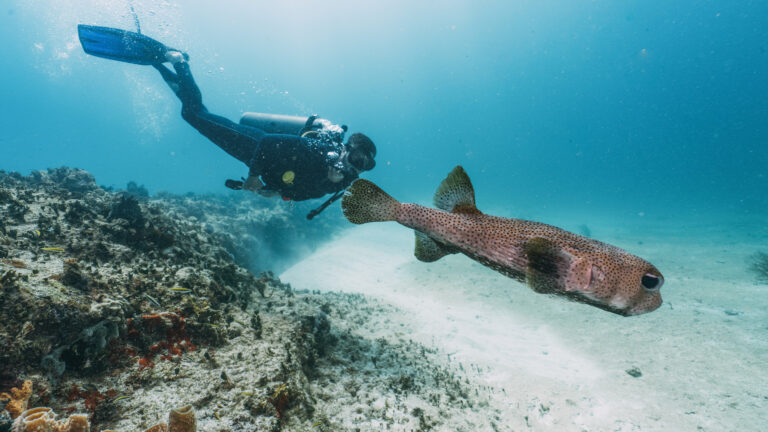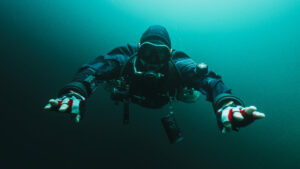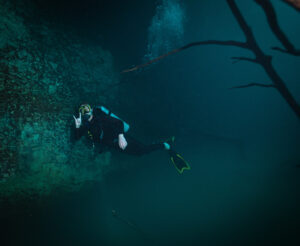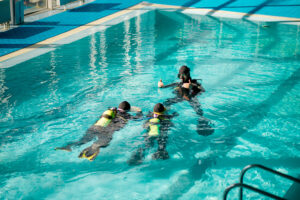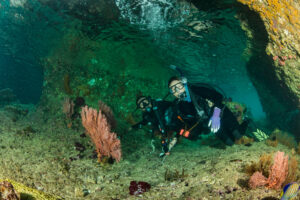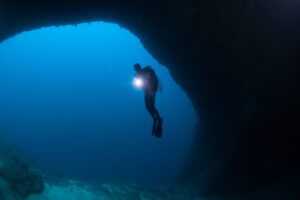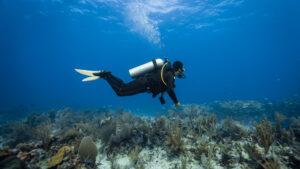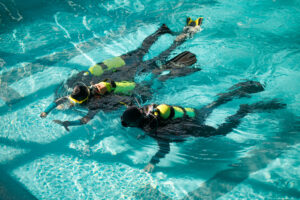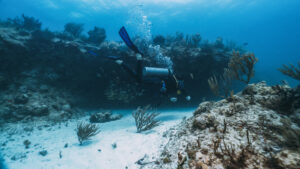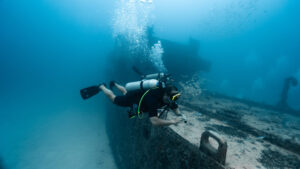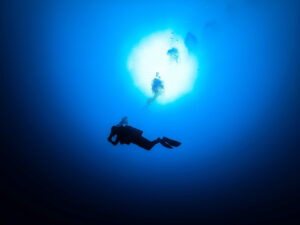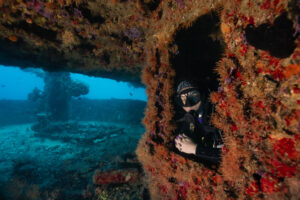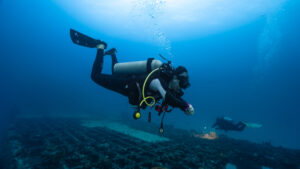What is Mask Clearing?
Mask clearing is a crucial skill that every scuba diver must learn and master to ensure a safe and enjoyable underwater experience. This technique involves removing water that has inadvertently entered the diver’s mask while underwater. Mask clearing is typically taught during open-water certification courses and is essential for maintaining clear vision and preventing mask-related issues during dives.
History and Importance
The art of mask clearing can be traced back to the early days of scuba diving when masks were rudimentary and prone to leaking. As diving technology evolved, so too did the need for divers to efficiently and effectively clear their masks of water. The process has since been refined and standardized to ensure the safety and comfort of divers across the globe.
Mask clearing is a vital skill for various reasons. Firstly, it helps maintain clear vision underwater, enabling divers to navigate and communicate effectively. Secondly, it prevents discomfort and irritation caused by water in contact with the eyes or nose. Lastly, knowing how to clear a mask empowers divers to handle emergencies or challenging conditions with confidence.
Types of Masks and Common Causes of Leakage
Scuba diving masks come in various shapes, sizes, and designs, with the most common being the single-lens, dual-lens, and full-face mask. Each type presents unique characteristics and potential sources of water intrusion.
Some common causes of mask leakage include:
- Poor mask fit: An ill-fitting mask may allow water to seep in through gaps around the skirt, especially when the diver smiles, talks, or moves their facial muscles.
- Hair interference: Stray hairs trapped under the mask skirt can create pathways for water ingress.
- Damaged or worn-out mask skirt: Over time, the mask skirt may become damaged or lose its flexibility, compromising the seal against the diver’s face.
- High pressure: In deep dives, the increased pressure can cause the mask to press tightly against the face, compromising the seal.
The Mask Clearing Process
The process of mask clearing is relatively simple and can be achieved through a series of deliberate steps. These steps may vary slightly depending on the type of mask, but the fundamental principles remain the same.
- Positioning: Ensure that you are in a comfortable and stable position underwater. You may choose to hover or hold onto a stationary object if available.
- Breathing: Throughout the clearing process, it is essential to continue breathing normally through your regulator. This helps maintain buoyancy and prevents you from accidentally inhaling water.
- Loosening the mask: Slightly tilt the bottom of the mask away from your face to create a small opening for the water to escape.
- Exhaling through the nose: While keeping your mouth closed, gently exhale through your nose. The exhaled air will force the water out through the opening created in step 3.
- Resetting the mask: Once the water has been expelled, press the top of the mask against your forehead and release the bottom to reestablish the seal.
Tips and Troubleshooting
While mask clearing is a straightforward process, some common issues may arise. Here are some tips and solutions to address them:
- Insufficient exhalation: If the water does not clear after exhaling, try exhaling with more force or repositioning the mask to create a larger opening.
- Mask fogging: To prevent mask fogging after clearing, use defogging solutions or saliva on the inner surface of the mask before diving.
- Panicking: If you feel anxious or panicked during mask clearing, remember to breathe slowly and deeply through your regulator. Practice the technique in a controlled environment, like a pool, to build confidence.
Key Takeaways
Mask clearing is an essential skill that every scuba diver should master for safety and comfort during dives. It enables divers to maintain clear vision, prevents discomfort, and instills confidence in handling various underwater situations. By learning the proper technique for mask clearing and practicing it regularly, divers can ensure that they are well-prepared for any eventuality.
In addition to mask clearing, divers should also be familiar with other mask-related skills, such as equalizing pressure and adjusting the mask strap for optimal fit. These skills contribute to a more enjoyable and secure diving experience.
Mask clearing is just one aspect of a comprehensive open-water certification course, which also covers buoyancy control, underwater navigation, regulator recovery, and other essential scuba diving skills. By completing this course and mastering the techniques taught, divers can ensure that they are well-equipped to explore the underwater world safely and confidently.
As scuba diving continues to grow in popularity, so does the importance of proper training and skill development. Mask clearing, along with other essential diving techniques, should be considered a fundamental part of every diver’s skillset. Whether you are a beginner or an experienced diver, refining and practicing these skills will not only enhance your diving experience but also contribute to the overall safety and enjoyment of the sport.
Mask clearing is an indispensable skill for all scuba divers. By understanding the different types of masks, the common causes of leakage, and the proper technique for clearing a mask, divers can better prepare themselves for the challenges and rewards of exploring the underwater realm. Practicing and mastering this skill, along with other essential diving techniques, will help ensure a safe, comfortable, and unforgettable scuba diving experience.

